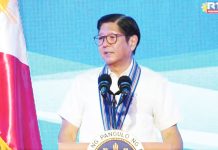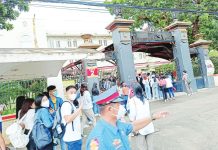OUR COUNTRY, OUR PRESENT AND OUR FUTURE
LAST November 19, 2017 we introduced the Bayanikasan Constitution of Dr. Salvador Araneta, which he presented in the 1972 Constitutional Convention, to our Panay News readers. The four pages summarized the Republic under the Bayanikasan Constitution. This was followed by an article published on January 28, 2017, “It is still noel even after Christmas.”
The shift to Federalism is not an easy process. While going through the Duterte Federalism, or any model of Federalism to be adopted to the Philippine scenario, one has to take a good look at the 1987 Constitution which is still in effect. By so doing, we can see what charter changes are really necessary and how we can change those provisions without the need of shifting to Federalism.
Furthermore, what are the provisions that the Duterte Federalism omitted if any, which are intended to keep the status quo? Added to these questions, we should list down what provisions for the 1987 Constitution have been continually violated!
This column attempts to look at the basic tenets of our Constitution, then look at the justification if any for this shift to Federalism.
We should not stop there but we should ask questions, like who are involved in drafting the new Constitution? Do they really represent us, the people?
Since it is the money of the people that will be involved, we all have a right to know where the money comes from. Is it from government savings, or government borrowings or earmarking future income for current expenses? Are we borrowing from China? Are we borrowing from the future prosperity of our children? Who will benefit from this shift?
When there is this great push to have Federalism adopted and not sparing any expense, there must be benefits to certain interests. This is a normal and logical conclusion. Before going any further let me explain why I have chosen to give a “tag” Bayanihan Federalism as Duterte Federalism.
Bayanihan Federalism is so similar in name to the Bayanikasan Constitution that Araneta presented in the 1971 Constitutional Convention that we can easily confuse one with the other.
We are taking this occasion kindly given us to present the Bayanikasan Constitution of Dr. Salvador Araneta, as a model.
Please take note that some of the recommendations of Araneta have been included in the 1987 Constitution without having a shift to Federalism. More importantly without any expenses to the taxpayer.
I am Salvador Araneta’s daughter I am proud of his ideas. But I know that he and I will agree, under whatever scenario a change in human values must precede a charter change or a shift to Federalism. I am sure my father will agree with me, that under the current scenario, we all have to stand up for our convictions, we must bring about our own information campaign and not just rely on the administration’s version on how we can improve the lives of every Filipino.
Before we can do that, there must be conversations on the issue. A polite and sincere one, if we should be given a chance. Discussions are important and they must be conducted with sincerity and honesty. I don’t have all the answers but we should look it up together if I can’t find it for you!
Araneta called for a “Bayanikasan Way of life.” What did he mean by this? Araneta being a prayerful person, active in social work, and as an educator and economist and a distinguished lawyer, looked at the teachings of various Popes.
According to Araneta, society to be truly human should be guided by at least these three papal encyclicals: Mater Et Magestra, Pacem in Terris, and Popularum Progreso. The papal teachings are coupled with Rizal’s own teachings and by his personal examples.
Araneta called for a re-birth of the Filipino, as one who embodies a new ideal, incorporating into our lives the best of Filipino traditions, the best of Filipino values and the best of our culture. (To be continued/PN)





